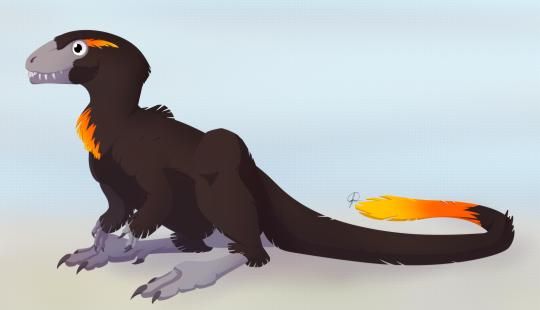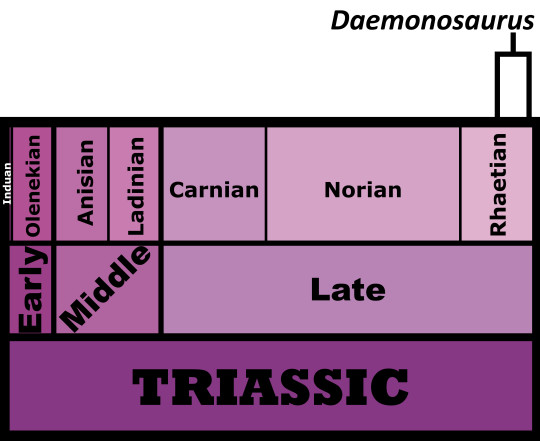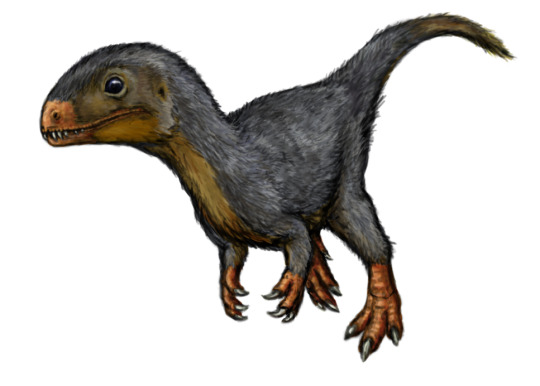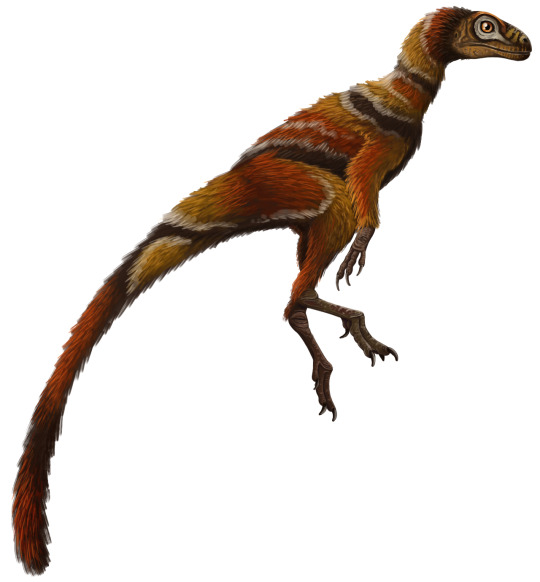#Daemonosaurus chauliodus
Text
Everyone should have a species of dinosaur that they get absolutely obsessed with & start researching & learn everything about. Like even if you’re not a paleontologist or even super duper interested in paleontology you should have Your dinosaur (& tbh you don’t even have to learn everything about them, just familiarize yourself with the fellow & maybe be able to spout some fun facts about them in conversation). It’s good for your soul.
#and nothing basic like a T. rex or whatever. We’re all already T. rex girls you need a more obscure dino to be Yours#Personally? I’m a Daemonosaurus chauliodus girl
1 note
·
View note
Text
Daemonosaurus chauliodus

By José Carlos Cortés
Etymology: Demon Reptile
First Described By: Sues et al., 2011
Classification: Dinosauromorpha, Dinosauriformes, Dracohors, Dinosauria, Saurischia, Eusaurischia, Theropoda
Status: Extinct
Time and Place: Between 205 and 202 million years ago, in the Rhaetian of the Late Triassic


Daemonosaurus is known from the Siltstone Member of the Chinle Formation in New Mexico

Physical Description: Daemonosaurus is an interestingly little dinosaur, and an enigmatic one, with its placement within the dinosaur family tree holding significant importance for how dinosaurs organize themselves in their initial diversification. This was a small, bipedal dinosaur, only about 1.5 meters long and weighing no more than 22 kilograms. While its body was relatively normal of a dinosaur at that time - longer legs than arms, arms built for grasping, long tail and stout torso - its head was downright bizarre. The skull was very short and box-like, rather than long and narrow or long and rectangular like other predatory dinosaurs of the time. Daemonosaurus also featured very long and large teeth in the upper jaw, and teeth that projected forward out of the mouth from both jaws - in short, it looked fairly buck-toothed. It also had a slight notch in its jaws, which could have been used to grab hold of struggling food and trap it there. It also might be an example of paedomorphy - while the head seems fairly juvenile (including rather big eyes), the rest of the body has the fused bones of an adult. As a small dinosaur, Daemonosaurus would have been covered in fluffy protofeathers for thermoregulation.
Diet: Daemonosaurus would have primarily eaten small animals like early mammals and smaller reptiles, though baby dinosaurs from other species wouldn’t have been off the menu.

By Michael B. H., CC BY-SA 3.0
Behavior: Daemonosaurus, being a smaller theropod, wouldn’t have been a very bold predator. Instead, it probably waited in the shadows and undergrowth a lot, looking for a moment to strike at its prey. Hiding in the bushes, it was able to stay safe from larger predators, which frequented the environment. It probably would use its hands and mouth to grab struggling prey, and also defend itself from danger. With its very large eyes, it’s even possible it was somewhat nocturnal, and did most of its hunting in the safety of night. It probably took care of its young, though of course without fossil evidence of such it is hard to tell; and it would have been a fairly active, intelligent animal in its habitat.
Ecosystem: Daemonosaurus lived in the Siltstone Environment of the Chinle Formation, a famous ecosystem showcasing the rise of dinosaurs within North America at the end of the Triassic Period. Daemonosaurus is known from one of the later ecosystems of that formation, which makes its position as a fairly basal theropod somewhat surprising. This was a seasonally arid floodplain, with trivers that would occasionally flood and alternate between that and drying up completely. As such, the plantlife around the floodplain was mostly hardy ferns, ginkgoes, horsetails, and cycads - as well as a fairly dense forest of pine and other coniferous trees. Here Daemonosaurus shared its environment with many other Triassic weirdos, such as the Drepanosaur (lizard-monkey thing) Avicranium, ray-finned fish such as Hemicalypterus and Lophionotus, the phytosaur Redondasaurus, the small Aetosaur Stenomyti; and other Dinosauromorphs. There was the Silesaurid Eucoelophysis, the Lagerpetid Dromomeron, and another theropod dinosaur, Ceolophysis.

By Scott Reid
Other: Is Daemonosaurus a theropod? Probably. But its head is so weird - and its whole body, too - that the position of Daemonosaurus is a question within the early diversification of dinosaur group. Indeed, Daemonosaurus often changes how a phylogenetic tree turns out. This weirdness is something to keep an eye on for now, because the jury is still out - though basal theropod seems likely. And what a weird theropod lineage it represents!
~ By Meig Dickson
Sources under the Cut
Barta, D. E., S. J. Nesbitt, M. A. Norell. 2018. The evolution of the manus of early theropod dinosaurs is characterized by high inter- and intraspecific variation. Journal of Anatomy 232: 80 - 104.
Ezcurra, M.D. (2006). "A review of the systematic position of the dinosauriform archosaur Eucoelophysis baldwini Sullivan & Lucas, 1999 from the Upper Triassic of New Mexico, USA." Geodiversitas, 28(4):649-684.
Griffin, C. T. 2019. Large neotheropods from the Upper Triassic of North America and the early evolution of large theropod body sizes. Journal of Paleontology: 1 - 21.
Irmis, R. B. 2005. The vertebrate fauna of the Upper Triassic Chinle Formation in northern Arizona. p. 63-88. in S.J. Nesbitt, W.G. Parker, and R.B. Irmis (eds.) 2005. Guidebook to the Triassic formations of the Colorado Plateau in northern Arizona: Geology, Paleontology, and History. Mesa Southwest Museum Bulletin 9.
Nesbitt, S.J., Irmis, R.B., and Parker, W.G. (2005). "A critical review of the Triassic North American dinosaur record." In Kellner, A.W.A., Henriques, D.D.R., & Rodrigues, T. (eds.), II Congresso Latino-Americano de Paleontologia de Vertebrados, Boletim de Resumos. Rio de Janeiro: Museum Nacional/UFRJ, 139.
Sues, H.-D., S. J. Nesbitt, D. S. Berman, A. C. Henrici. 2011. A late-surviving basal theropod dinosaur from the latest Triassic of North America. Proceedings of the Royal Society B 278 (1723): 3459 - 3464.
Sullivan, C., X. Xu. 2016. Morphological Diversity and Evolution of the Jugal in Dinosaurs. The Anatomical Record 300 (1): 30 - 48.
Weishampel, David B.; Dodson, Peter; and Osmólska, Halszka (eds.): The Dinosauria, 2nd, Berkeley: University of California Press. 861 pp. ISBN 0-520-24209-2.
#Daemonosaurus chauliodus#Daemonosaurus#Dinosaur#Theropod#Prehistoric Life#Paleontology#Palaeoblr#Factfile#Prehistory#Carnivore#Triassic#North America#Theropod Thursday#dinosaurs#biology#a dinosaur a day#a-dinosaur-a-day#dinosaur of the day#dinosaur-of-the-day#science#nature
318 notes
·
View notes
Photo



Decided to revisit an old drawing i made back in 2017. I only decided to show half of the colored version because the the rest looks pretty crap
23 notes
·
View notes
Text
Dinosaurs of Ghost Ranch
Daemonosaurus chauliodus
('demon reptile, buck-toothed') very fitting name
Saurischia, most likely basal Theropoda
Certainly one of the most basal theropods (if indeed a theropod) yet described anywhere in the world, this tiny terror lived beside the likes of Coelophysis bauri, the much more famous and much more prevalent animal of the Chinle Formation of New Mexico.
The only known skull of Daemonosaurus differs dramatically from all other Triassic theropods. It is short and deep, with extremely large premaxillary and maxillary teeth in the upper jaw, earning the animal its specific name, chauliodus--'buck-toothed'.
Chinle Formation, Ghost Ranch, New Mexico, USA.
Upper Triassic, ~205.6 - 201.6 Ma.
~
Artwork by Apsaravis.

Daily Dino Fact #28
6 notes
·
View notes
Text

Daemonosaurus chauliodus, a small triassic theropod found in the Chinle formation, New Mexico.
#dinosaur#illustration#paleontology#paleoart#paleoillustration#dinosauria#animals#palaeontology#palaeoblr#paleoblr
499 notes
·
View notes
Text
New "Buck-Toothed Evil Spirit" Dinosaur Found
A newly discovered dinosaur species bridges the gap between the earliest known group of predators and more advanced beasts such as Tyrannosaurus rex, according to a new study.
Found at New Mexico's Ghost Ranch fossil site, the primitive dinosaur lived about 205 million years ago.
The dinosaur, which stood as tall as a large dog, boasts a very unusual skull, said study co-author Hans-Dieter Sues, a vertebrate paleontologist at the National Museum of Natural History in Washington, D.C.
"It has a deep, short snout and these monstrous front teeth. That's a kind of skull structure for a predatory dinosaur that's really unexpected for this early point in time," Sues said.
These features helped earn the new dinosaur the name Daemonosaurus chauliodus, or "buck-toothed evil spirit" in Greek. Read more.
8 notes
·
View notes
Text
Daemonosaurus chauliodus

Source: http://newsdesk.si.edu/photos/daemonosaurus-face
Name: Daemonosaurus chauliodus
Name Meaning: Prominent toothed demon lizard
First Described: 2011
Described by: Sues et al
Classification: Dinosauria, Saurischia, Eusaurischia, Theropoda
Daemonosaurus is a recently discovered basal theropod dinosaur from the Rhaetian age of the Late Triassic, between 208 to 201 million years ago. It was discovered in the Chinle Formation in Arizona. It lies outside of the Neotheropoda clade, making it somewhat less complex than contemporary theropods such as Coelophysis. It is known from a single incomplete skeleton. As such, it represents the group that extended from the early basal dinosaurs described previously on this blog, and later evolved into the more advanced theropods of later periods. It differs from both the early basals such as Herrerasaurus, and later early theropods such as Coelophysis. It wasn't a very common predator, and it lived in a very diverse environment filled with the more complex early dinosaurs, many archosaurs, and other reptiles. Dinosaurs still weren't the major life group of animals, but they were diversifying and showing more specialization from the early basal forms. It was probably a predator, but due to the hederotontion present it also could have used its teeth to shear off leaves.
Sources:
http://en.wikipedia.org/wiki/Daemonosaurus
http://www.reptileevolution.com/daemonosaurus.htm
#daemonosaurus#daemonosaurus chauliodus#dinosaur#dinosaurs#a dinosaur a day#a-dinosaur-a-day#prehistory#Prehistoric Life#paleontology#biology#science#dinosaur of the day#dinosaur-of-the-day#nature#factfile
59 notes
·
View notes